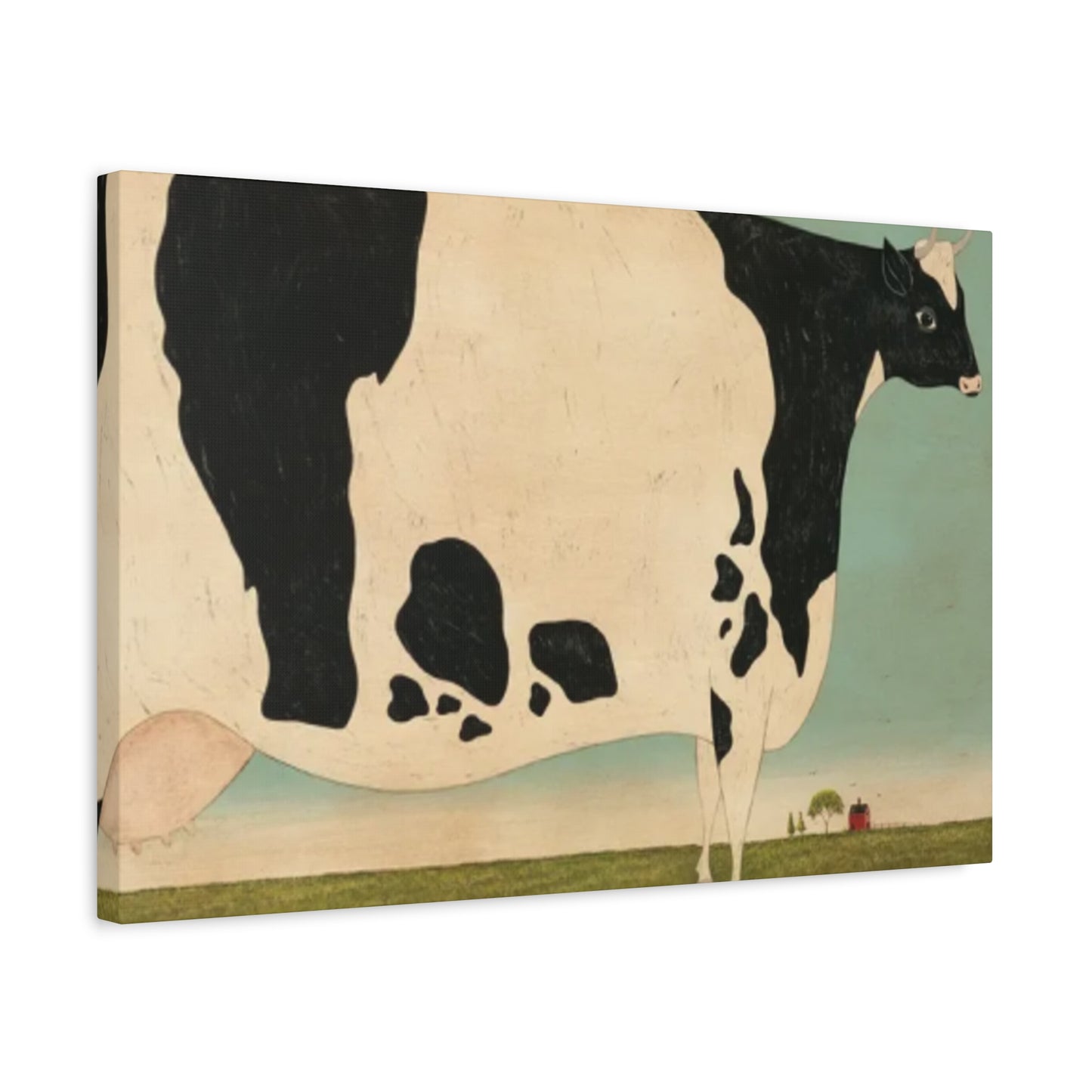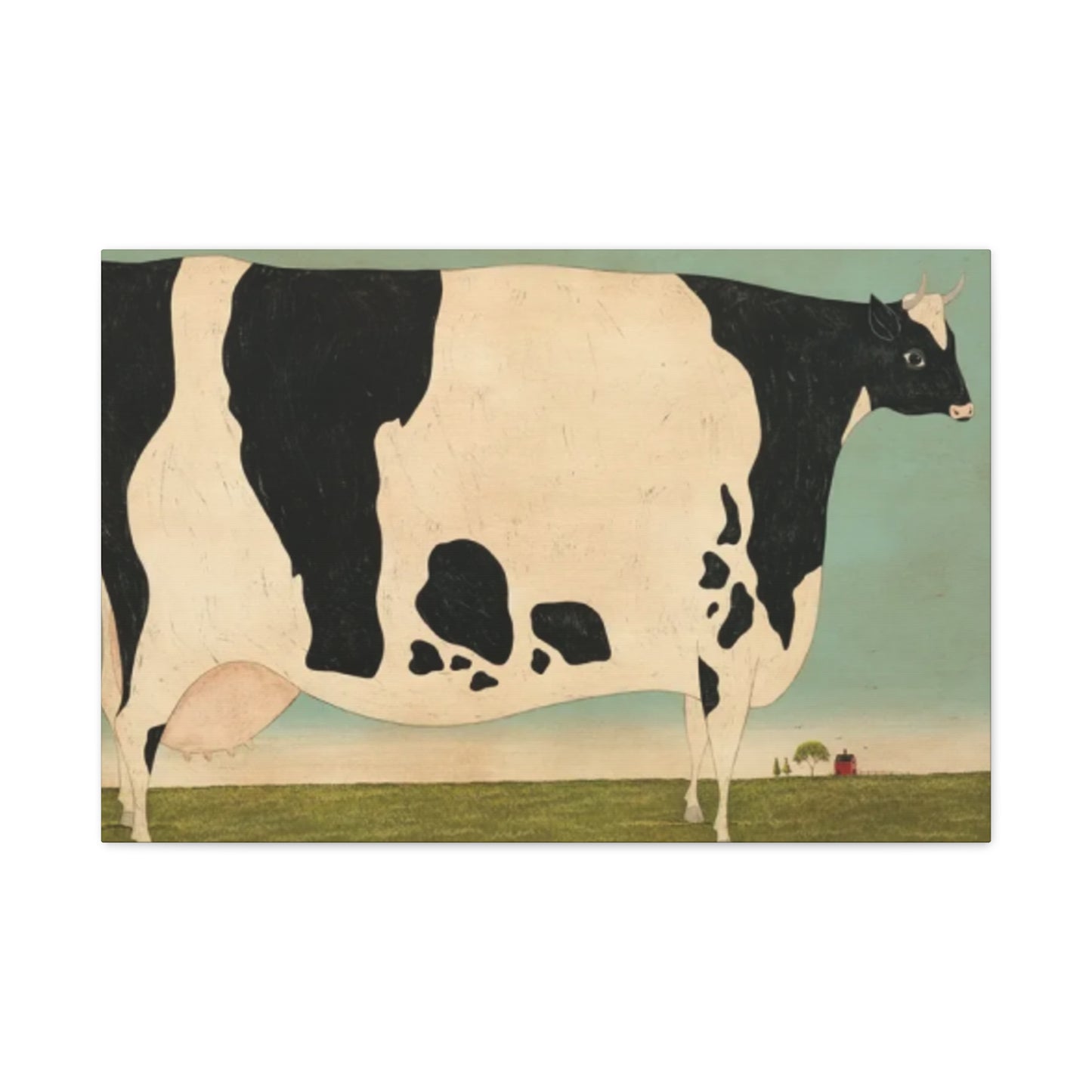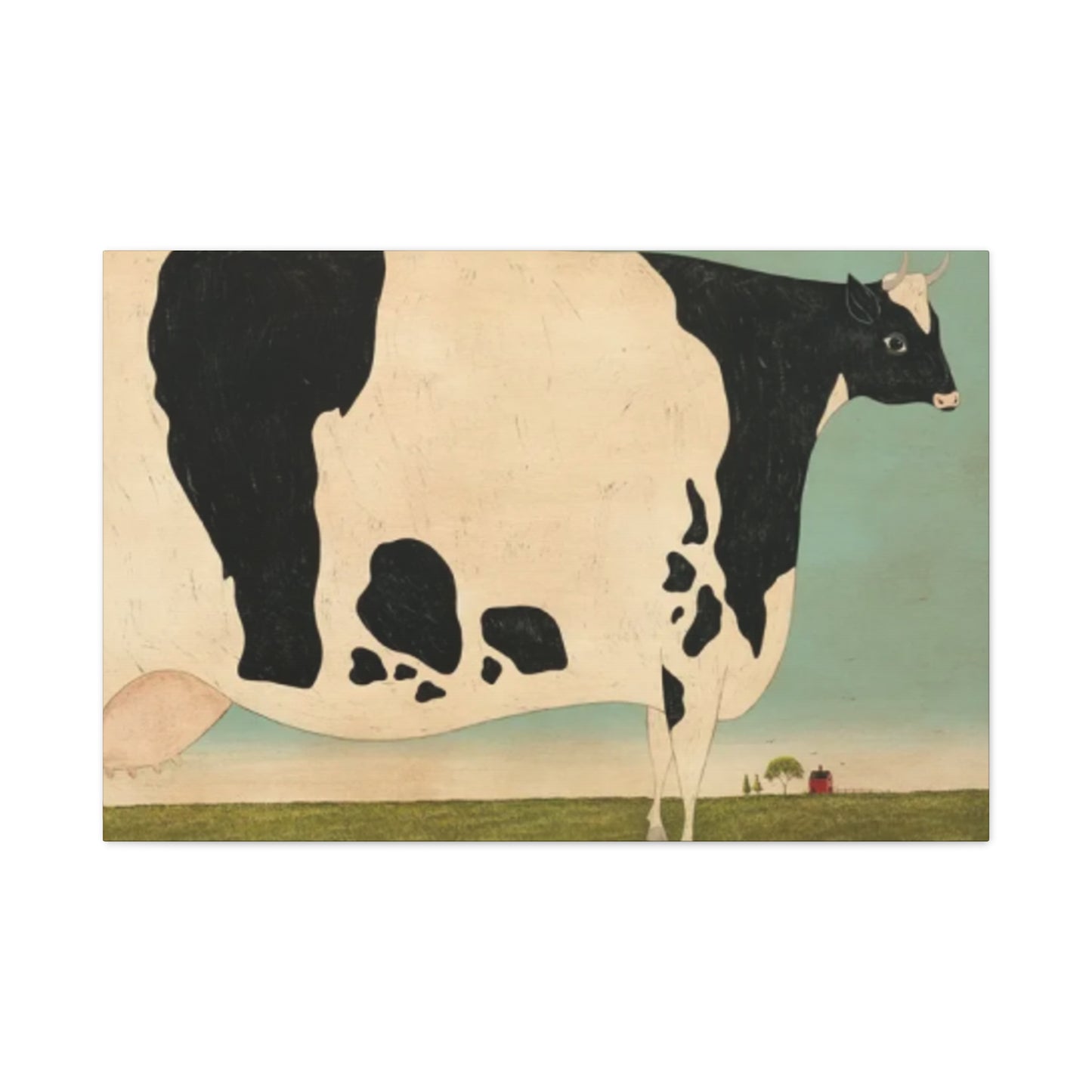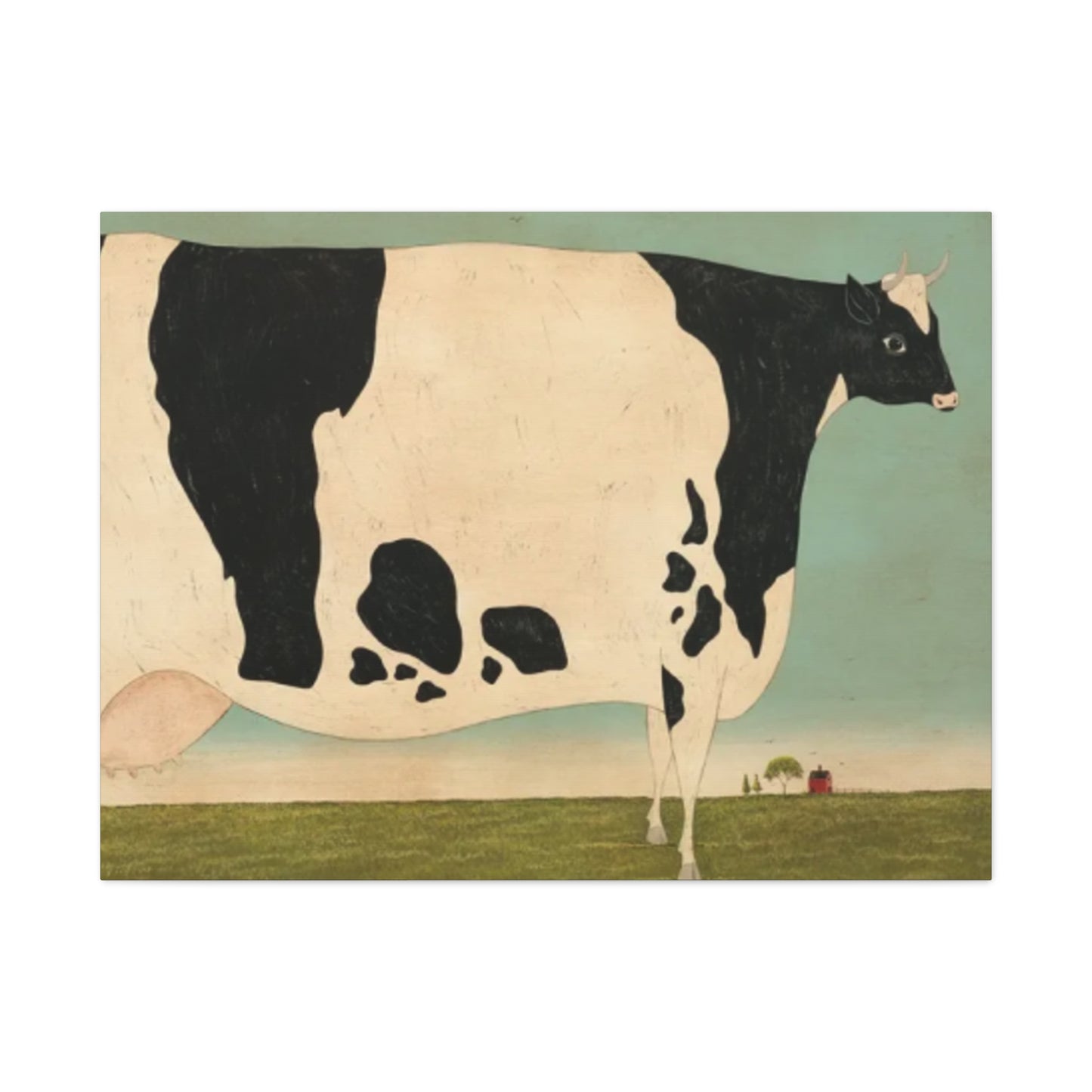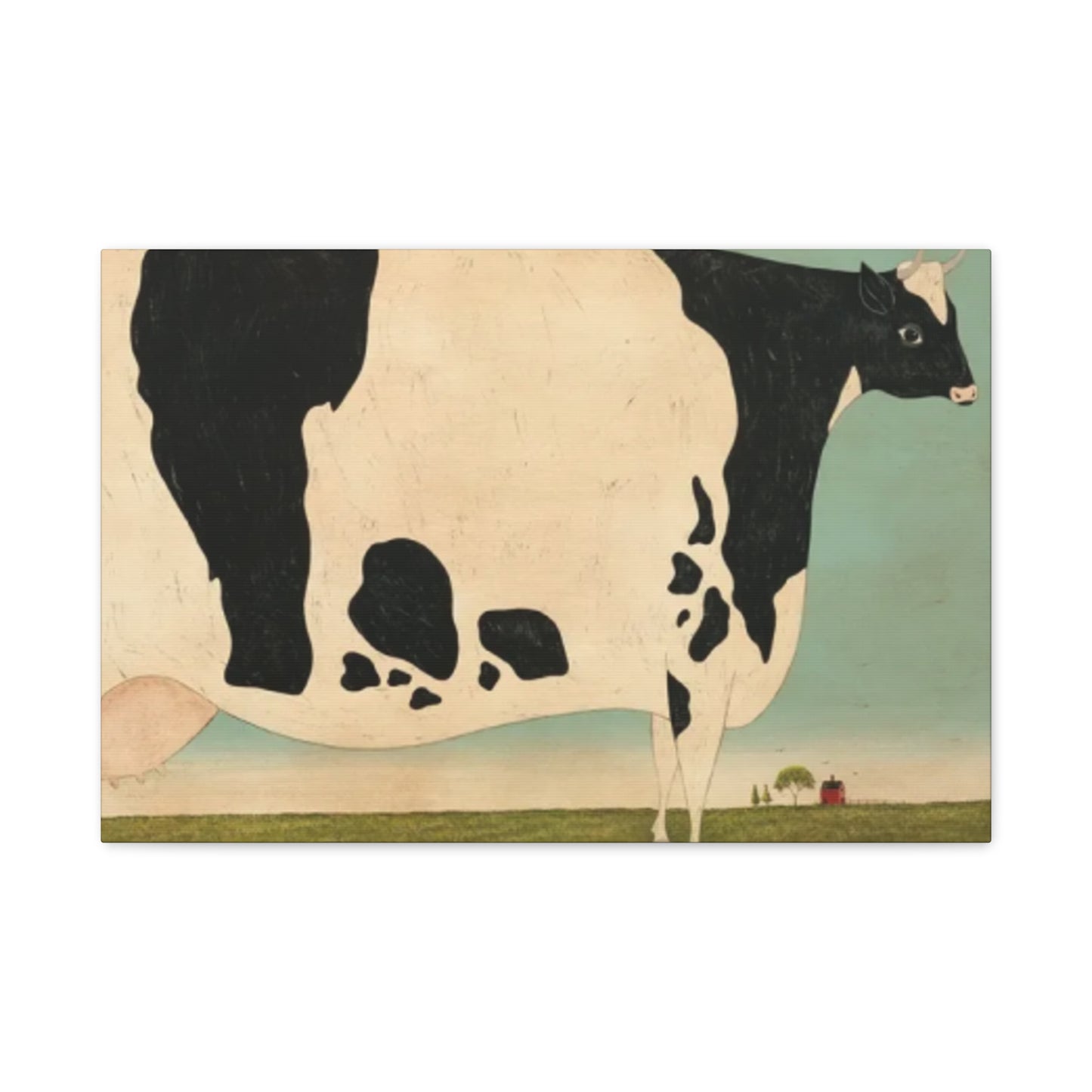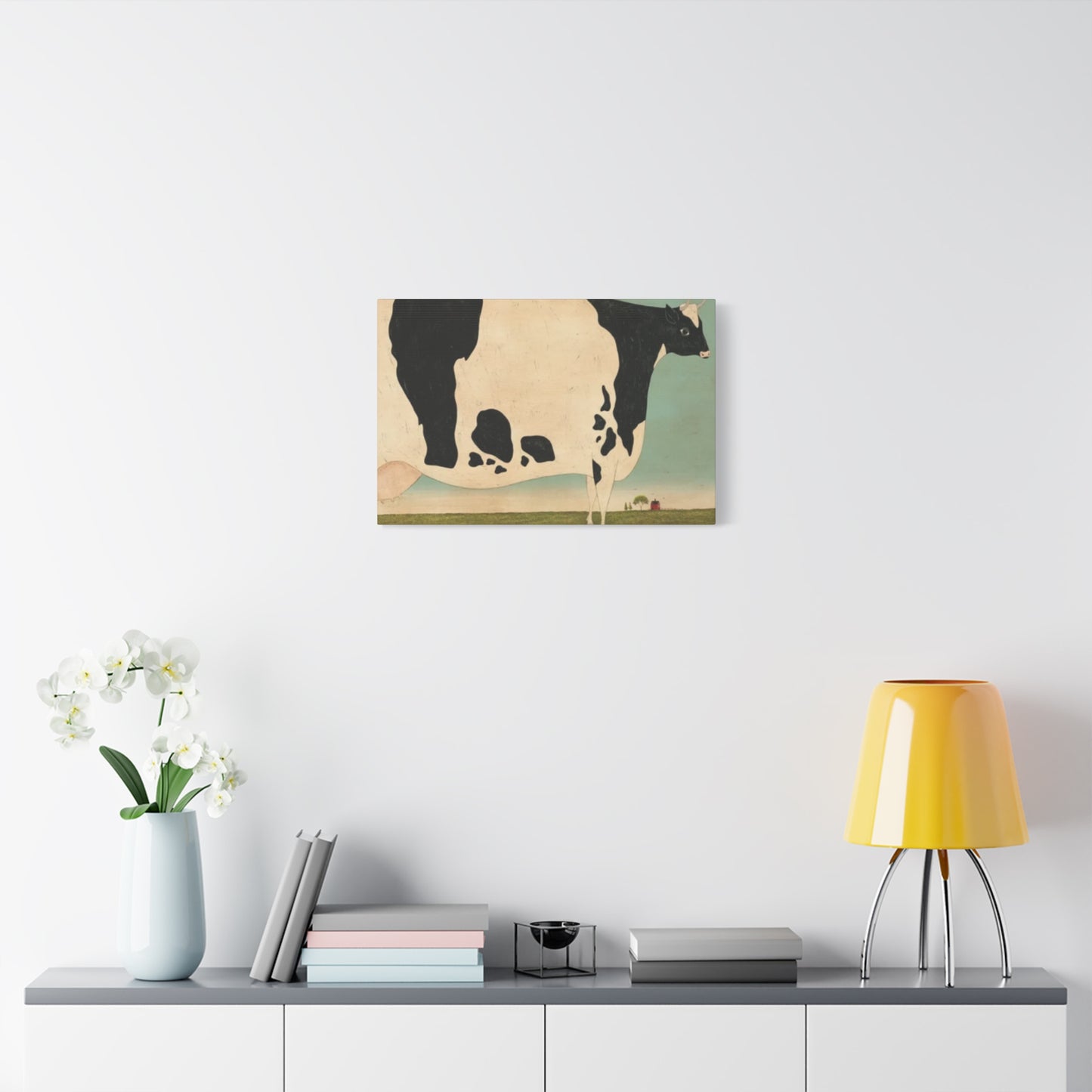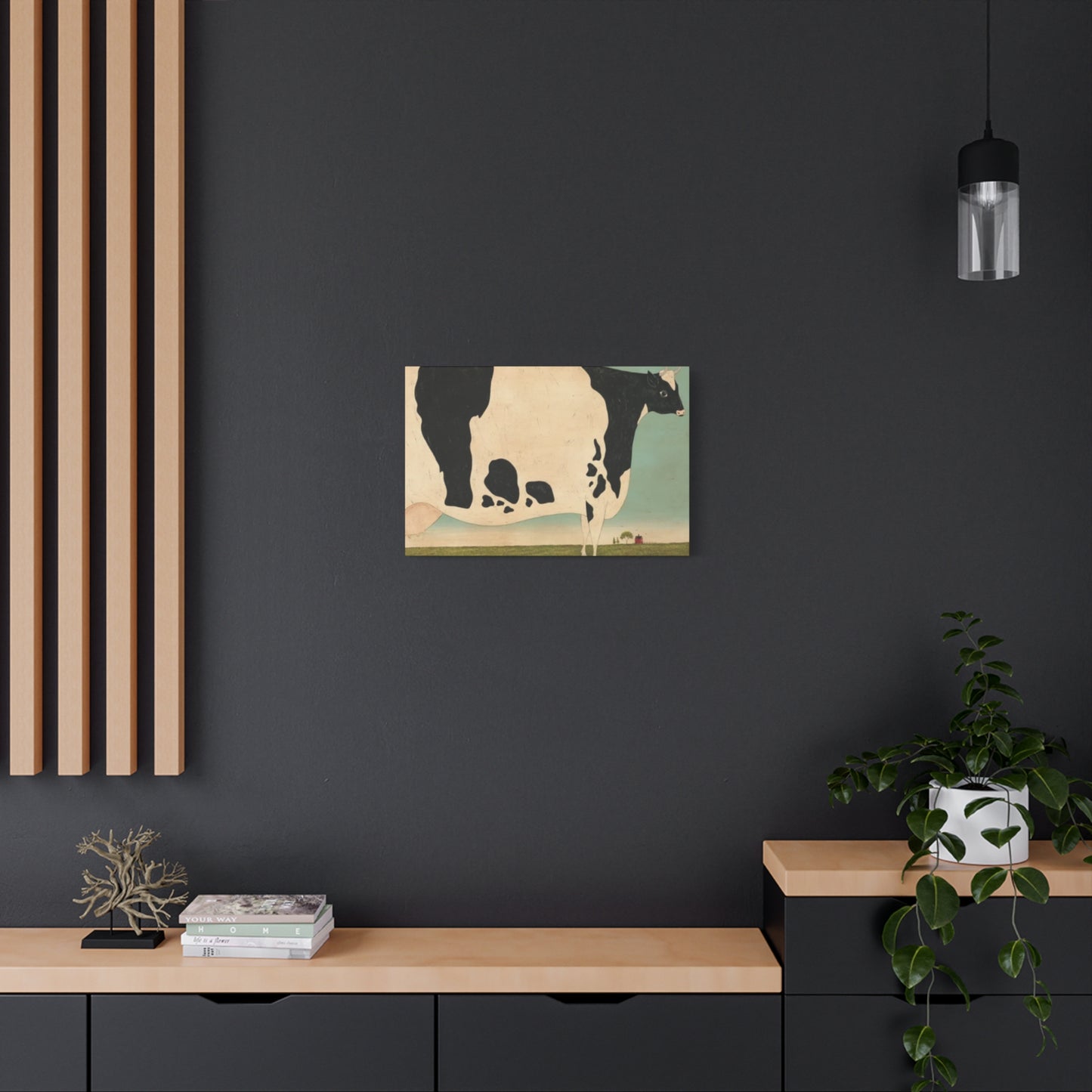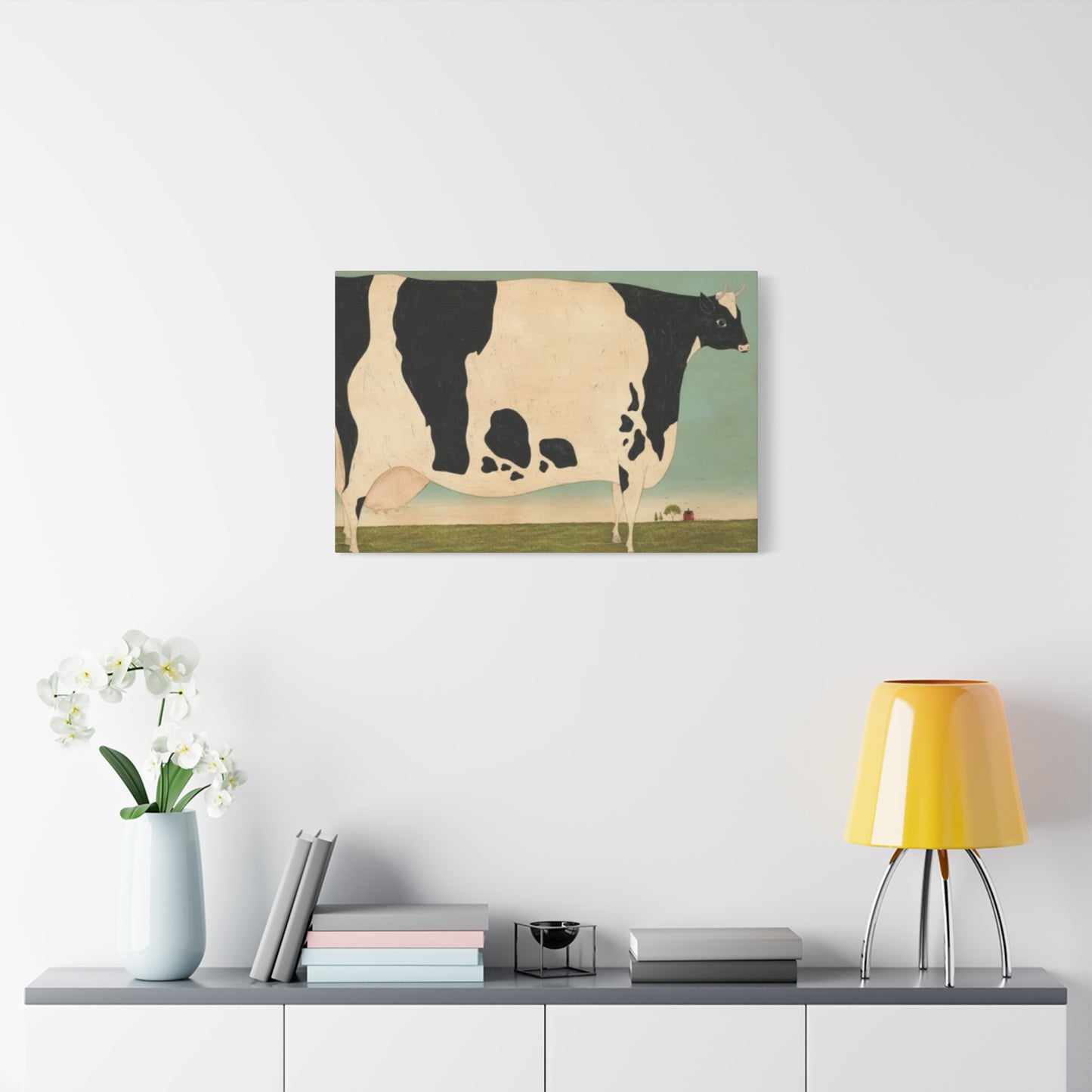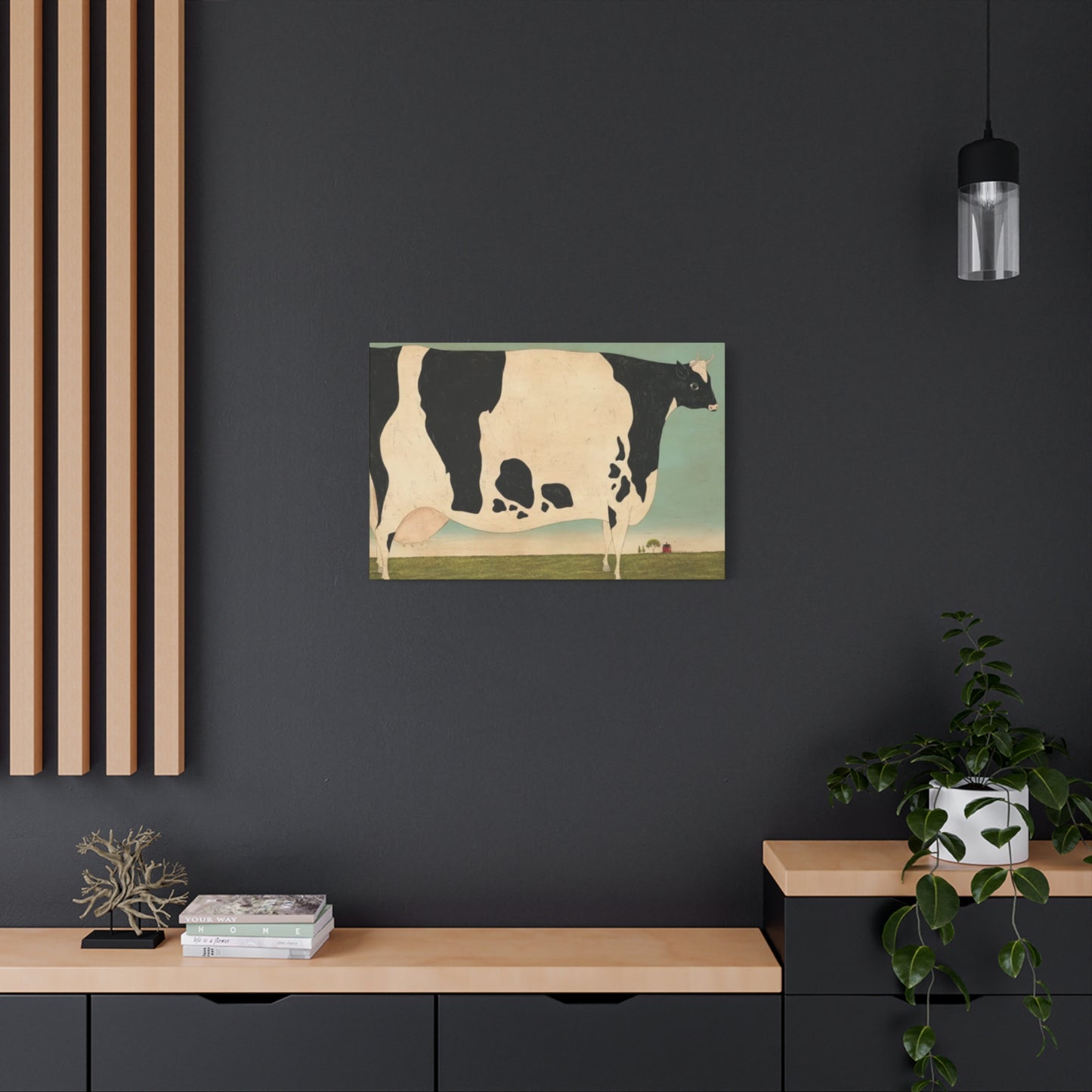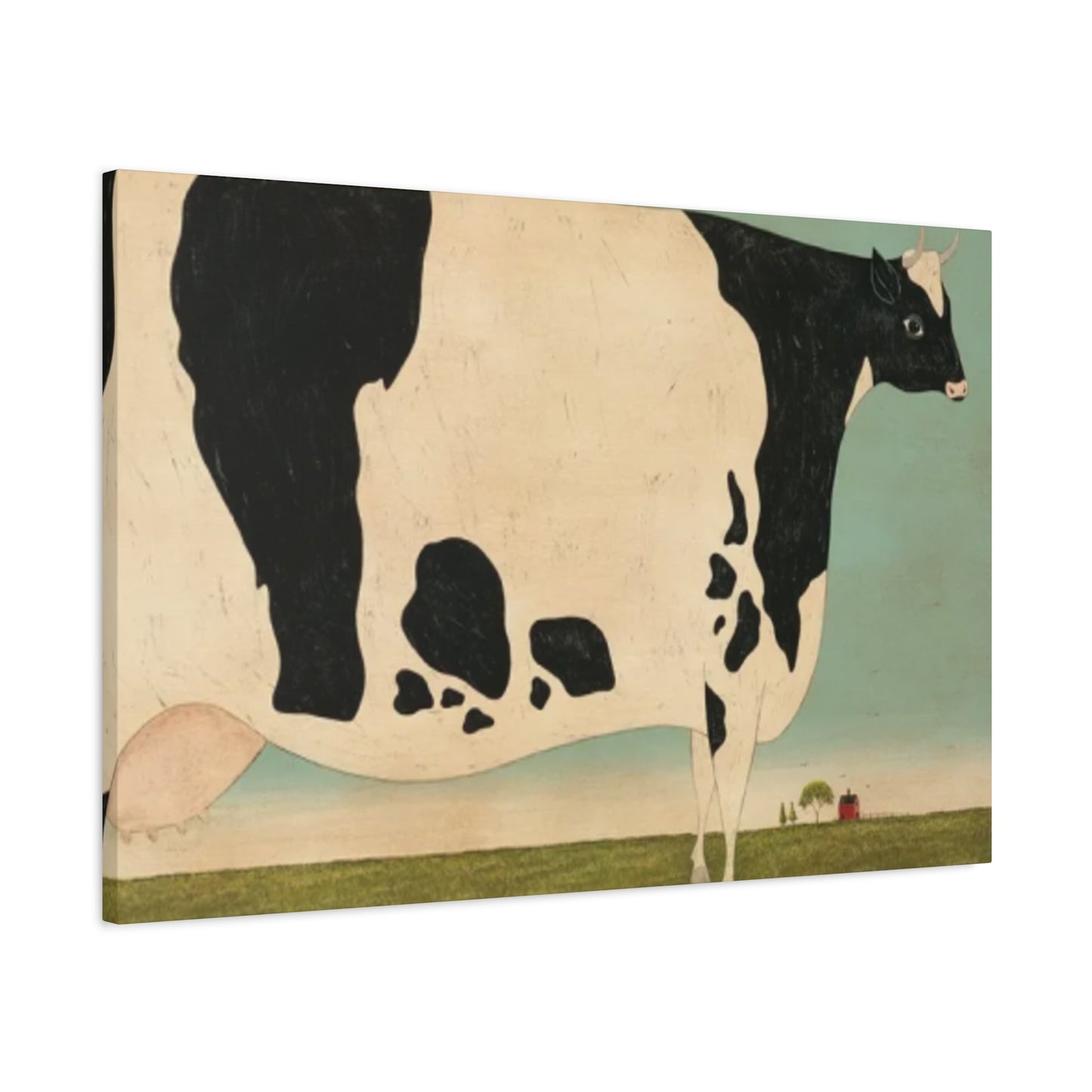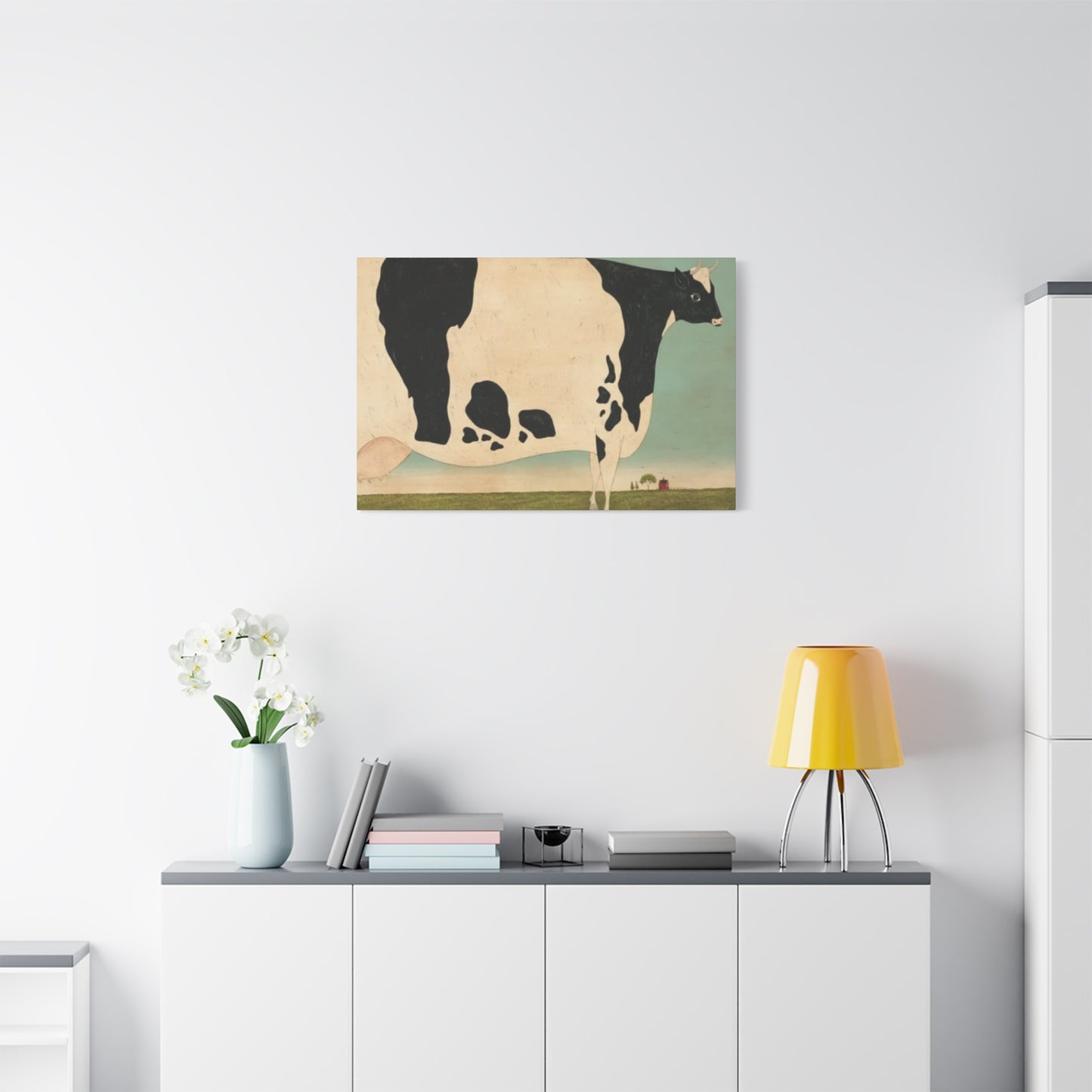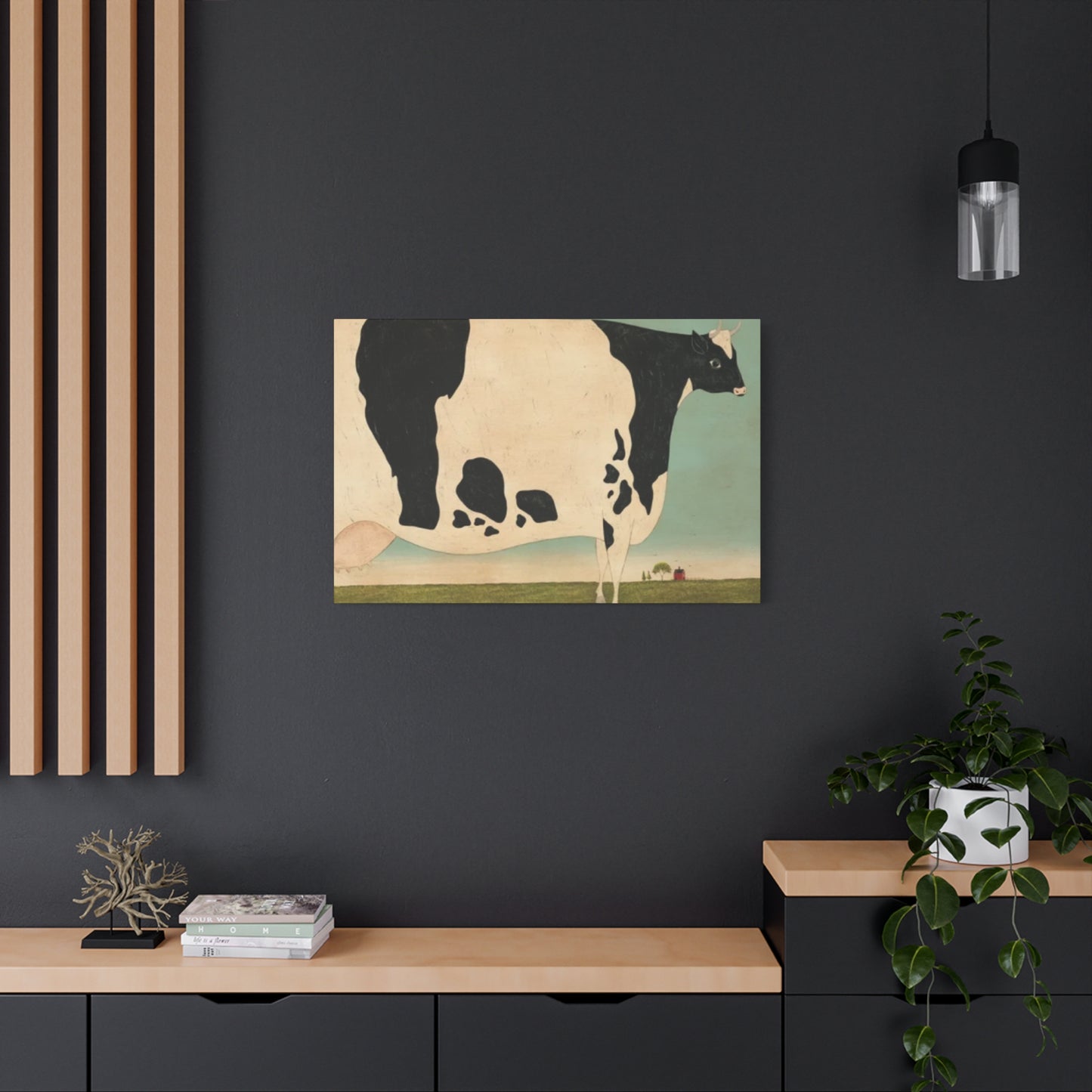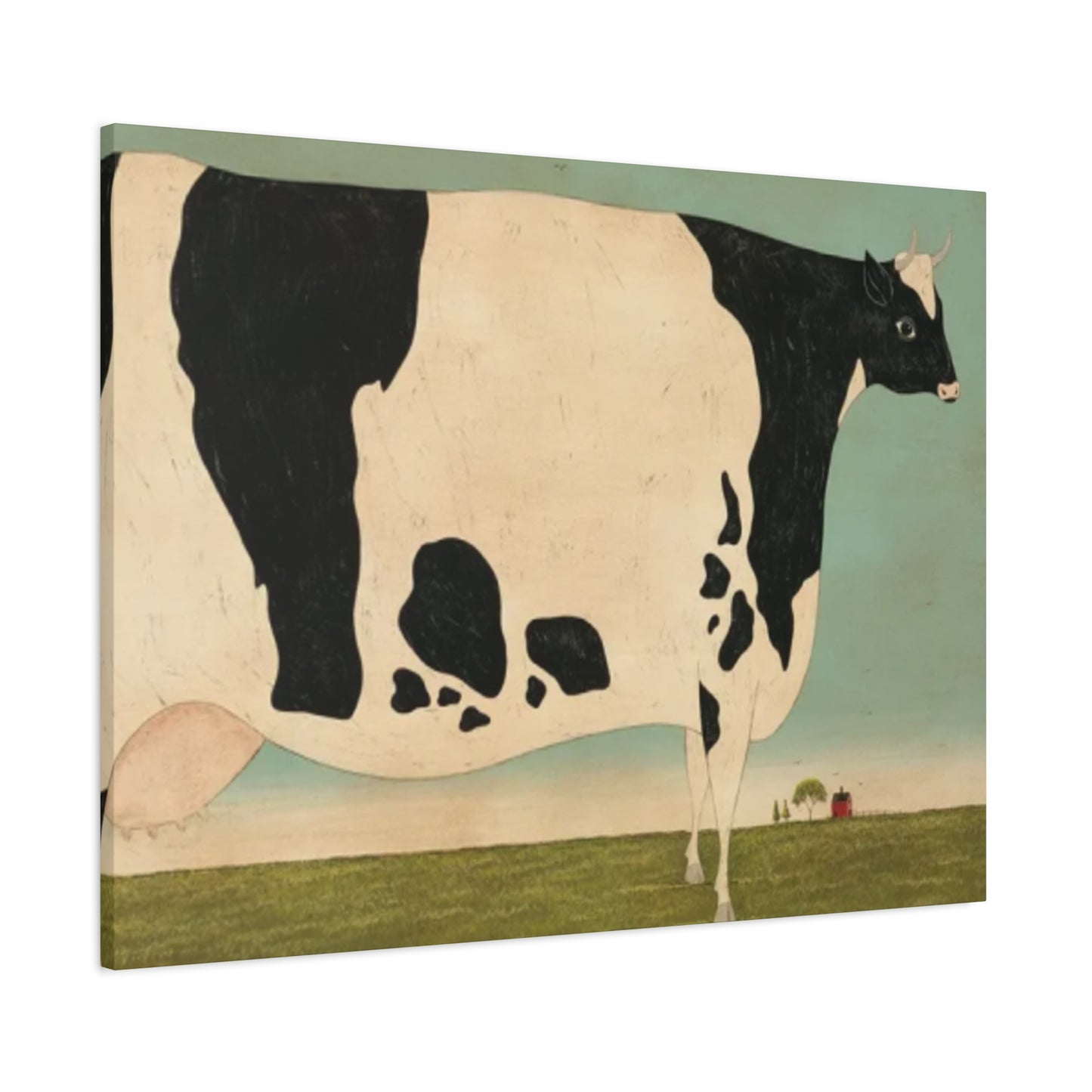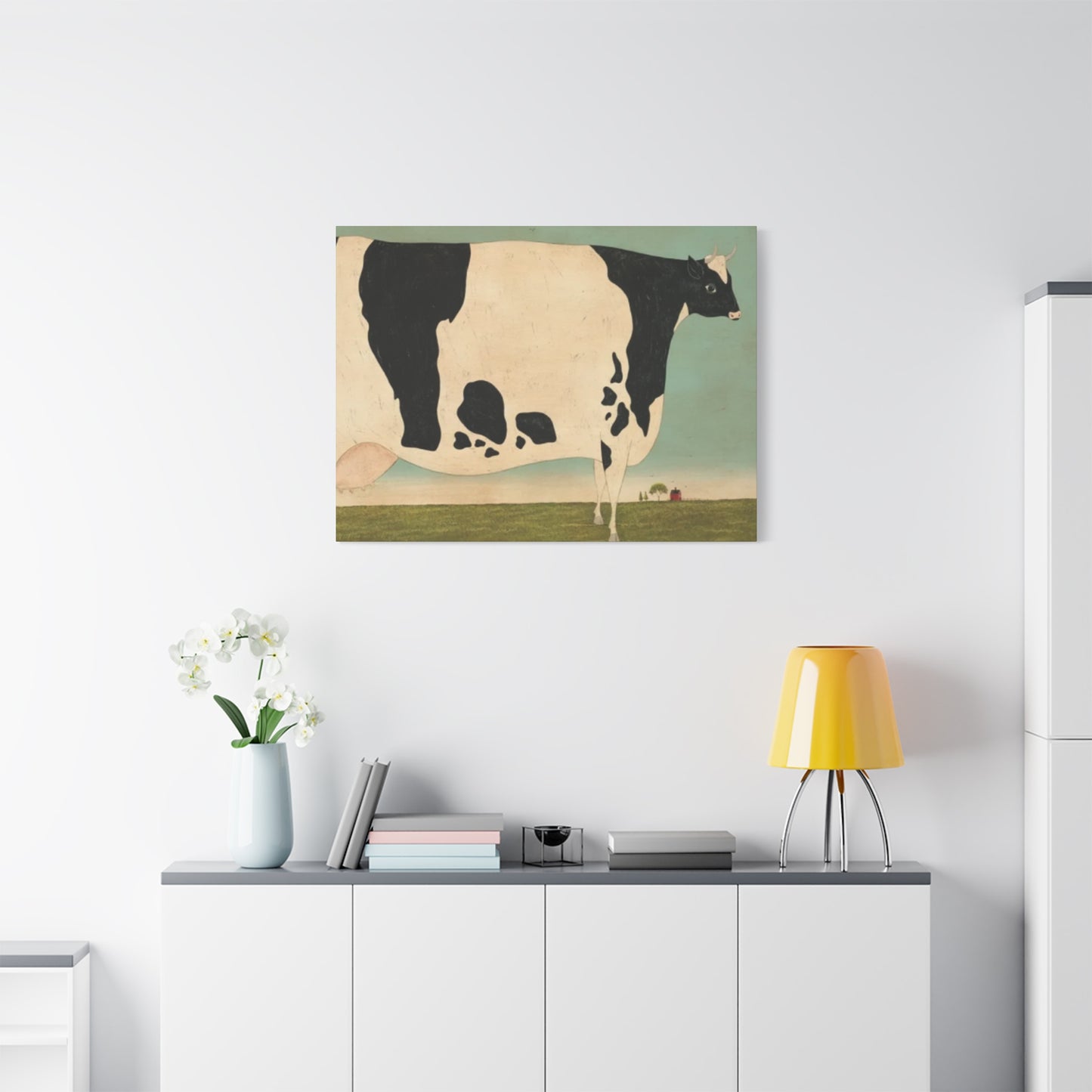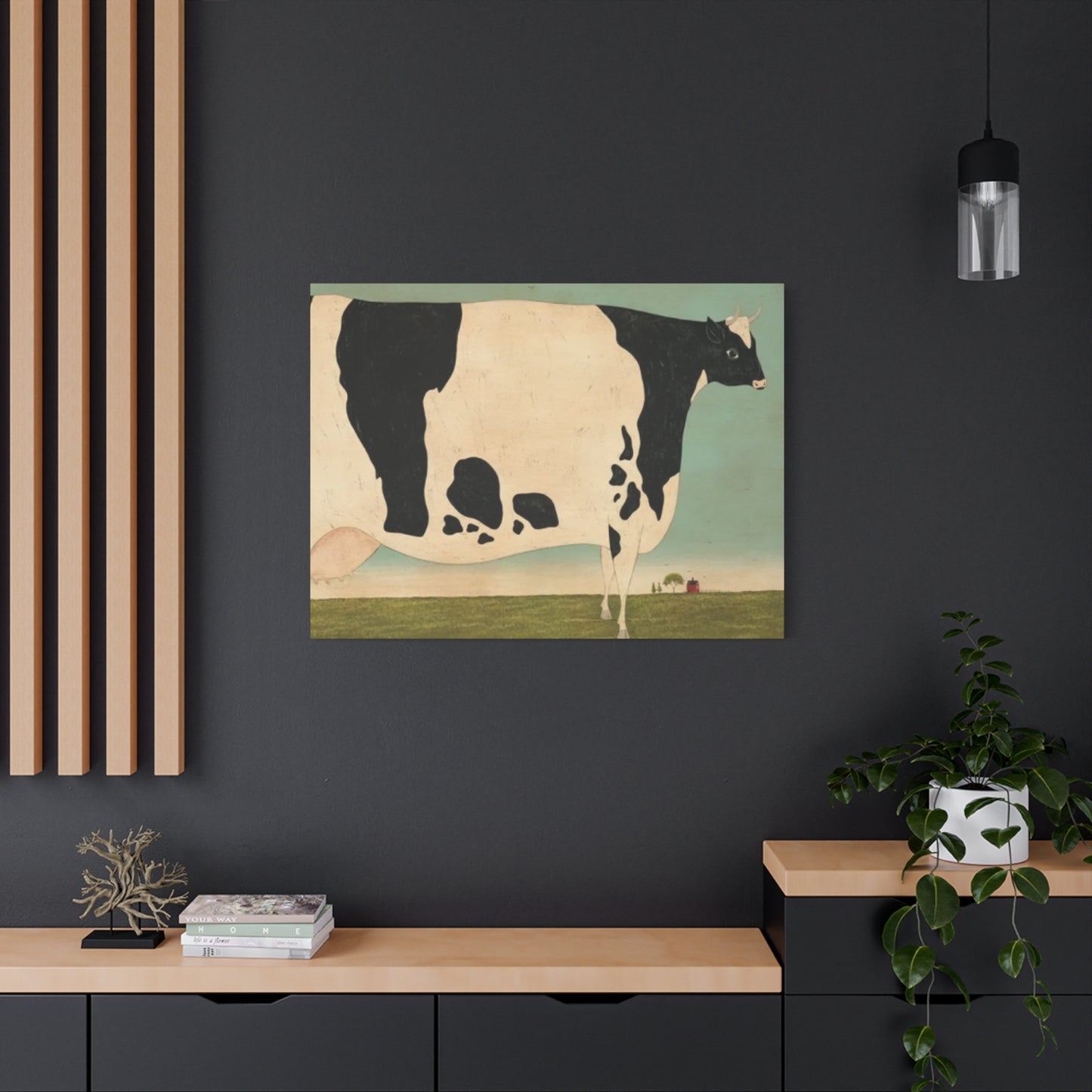Holstein Cow Farmhouse Wall Art Prints by Kimble Warren
The pastoral landscape of rural farming communities has long captured the imagination of artists, photographers, and nature enthusiasts alike. Among the most iconic and beloved subjects in agricultural imagery are the distinctive Holstein dairy cattle, with their striking black and white patterns creating natural masterpieces against verdant pastures and golden meadows. These magnificent animals represent more than mere livestock; they embody the essence of countryside tranquility, sustainable farming practices, and the timeless connection between humans and nature.
Holstein cattle, commonly referred to as dairy cows, have become synonymous with pastoral beauty and agricultural prosperity. Their distinctive spotted coats create a visual symphony of contrasting colors that photographers and artists have sought to capture for generations. The interplay of their monochromatic patterns against the rich greens of pastureland creates compositions that speak to the soul, evoking memories of simpler times and deeper connections to the natural world.
The aesthetic appeal of these bovines extends far beyond their practical purpose in dairy production. Their gentle demeanor, combined with their striking appearance, makes them ideal subjects for various forms of artistic expression, from traditional oil paintings to contemporary digital photography. The way morning sunlight dances across their black and white patches, creating intricate shadows and highlights, provides endless inspiration for creative minds seeking to capture the essence of rural life.
Pastoral Elegance: The Natural Canvas of Dairy Cattle in Open Fields
The sight of Holstein cows peacefully grazing in expansive meadows represents one of nature's most harmonious scenes. These gentle giants move with a measured grace across rolling hills, their distinctive patterns creating moving art installations against the backdrop of endless skies and distant horizons. Each animal carries its own unique configuration of spots and markings, making every individual a one-of-a-kind masterpiece worthy of artistic attention.
The visual impact of these cattle in their natural environment cannot be overstated. Their presence transforms ordinary farmland into scenes of pastoral poetry, where every movement tells a story of contentment and natural rhythm. The contrast between their bold black markings and pristine white patches creates a natural chiaroscuro effect that painters have long sought to replicate in their works.
When observed during different times of day, these animals reveal varying aspects of their beauty. During early morning hours, when dew still clings to grass blades, their coats appear to shimmer with ethereal light. The soft illumination creates gentle gradients between their contrasting colors, producing scenes that seem almost dreamlike in their serenity. As the day progresses and shadows shift, new patterns emerge, constantly changing the visual narrative of their presence in the landscape.
The behavioral patterns of Holstein cattle add another dimension to their artistic appeal. Their unhurried movements, methodical grazing habits, and social interactions create dynamic compositions that change throughout the day. Whether standing in contemplative poses against fence lines or gathering in peaceful groups beneath shading trees, these animals provide endless opportunities for capturing the essence of rural tranquility.
The seasonal changes in their environment further enhance their visual impact. Spring brings tender green pastures that complement their markings beautifully, while summer's golden grasslands create warm, inviting scenes. Autumn's changing foliage provides a spectacular backdrop of reds and golds, and winter's stark landscapes allow their patterns to stand out with dramatic clarity against snow-covered fields.
Countryside Serenity: Holstein Cattle Creating Living Art in Agricultural Settings
The integration of Holstein dairy cattle into agricultural landscapes creates a perfect synthesis of functionality and beauty. These animals serve as living brushstrokes across the canvas of farmland, their movements and positioning creating ever-changing compositions that celebrate the harmony between human agricultural endeavors and natural beauty. Their presence elevates ordinary farming scenes into works of art that speak to the soul of rural living.
The way these cattle interact with their environment tells a story of sustainable agriculture and responsible land stewardship. Their grazing patterns help maintain healthy grasslands while their presence adds life and movement to static agricultural scenes. This symbiotic relationship between livestock and landscape creates visual narratives that celebrate the wisdom of traditional farming methods and the beauty inherent in working with nature rather than against it.
The architectural elements of farm settings provide perfect frames for these bovine subjects. Weathered wooden fences, rustic barns, and stone walls create compositional elements that enhance rather than detract from the natural beauty of the cattle. These structures add depth and context to scenes, creating layered compositions that tell stories of human history and agricultural heritage.
The changing light throughout the day transforms these pastoral scenes into different moods and atmospheres. Morning light bathes everything in soft, golden tones that emphasize the peaceful beginning of each day. Midday sun creates sharp contrasts and deep shadows that add drama to compositions. Evening light brings warm, amber hues that create romantic and nostalgic feelings, while the soft light just after sunset creates mysterious and contemplative moods.
The presence of other farm elements enhances the overall aesthetic impact of these scenes. Hay bales scattered across fields create geometric patterns that contrast beautifully with the organic shapes of grazing cattle. Farm equipment, when positioned thoughtfully in compositions, adds authenticity and tells stories of human endeavor and agricultural tradition.
Water features such as ponds, streams, or water troughs add reflective elements that double the visual impact of scenes. The sight of cattle drinking from a peaceful pond, their reflections creating perfect mirror images, produces compositions of extraordinary beauty and tranquility. These water elements also provide opportunities for capturing movement and changing light patterns as ripples disturb the surface.
Agricultural Aesthetics: The Timeless Beauty of Farm Life Through Bovine Imagery
The aesthetic dimension of dairy farming encompasses far more than mere agricultural production. Holstein cattle, with their distinctive markings and gentle presence, transform functional farmland into scenes of extraordinary beauty that have inspired artists, photographers, and nature lovers for generations. Their role extends beyond milk production to become ambassadors of rural beauty and sustainable living practices.
The seasonal rhythms of farm life create constantly changing backdrops for these magnificent animals. Spring brings renewal and fresh growth, with cattle moving through emerald pastures dotted with wildflowers. The energy of new life and fresh beginnings is palpable in these scenes, creating compositions that celebrate rebirth and natural cycles. Young calves add playful elements to pastoral scenes, their youthful exuberance contrasting beautifully with the calm dignity of their mothers.
Summer intensifies the pastoral experience, with long, lazy days allowing cattle to graze peacefully in the warmth of abundant sunshine. The rich, full grasslands provide perfect settings for capturing the contentment and satisfaction that comes from living in harmony with natural rhythms. Heat waves rising from sun-warmed pastures add ethereal qualities to photographs and paintings, creating dreamlike atmospheres that transport viewers to peaceful rural settings.
Autumn brings spectacular color changes that create stunning backdrops for Holstein cattle. The contrast between their monochromatic patterns and the brilliant reds, oranges, and golds of changing foliage creates compositions of extraordinary visual impact. This season particularly lends itself to artistic interpretation, as the temporary nature of autumn colors adds poignancy to pastoral scenes.
Winter transforms farm landscapes into studies of survival and adaptation. Holstein cattle, with their thick winter coats, become symbols of resilience and endurance. Their dark markings stand out dramatically against snow-covered fields, creating high-contrast compositions that emphasize the stark beauty of winter landscapes. The way they huddle together for warmth creates touching images that speak to themes of community and mutual support.
The daily routines of farm life provide structure and rhythm to artistic compositions. Morning milking brings cattle together in organized groups, their movement toward barns creating directional lines that guide viewers' eyes through compositions. Evening returns to pasture create peaceful processions that celebrate the end of productive days and the promise of restful nights.
Rustic Elegance: Holstein Patterns Creating Natural Masterpieces
The individual markings of each Holstein cow create unique patterns that rival any human artwork in their complexity and beauty. No two animals share identical spot configurations, making each creature a singular masterpiece worthy of individual artistic attention. These natural patterns have fascinated observers for centuries, inspiring countless artistic interpretations and creative expressions.
The genetic lottery that determines each animal's markings creates infinite variations on the black and white theme. Some cattle display large, bold patches that create dramatic contrasts, while others exhibit intricate networks of smaller spots that create detailed textures across their coats. The random nature of these patterns ensures that every composition featuring Holstein cattle includes elements of surprise and uniqueness.
The way light interacts with these patterns adds another layer of complexity to their visual appeal. Sunlight filtering through tree branches creates dappled shadows that interact with natural spot patterns, producing ever-changing compositions of light and shadow. The three-dimensional nature of the animals means that patterns appear different from various viewing angles, ensuring that artistic interpretations can capture many different aspects of the same subject.
The contrast ratios achieved by nature in these animals often exceed what artists might dare attempt in their own works. The pure whites and deep blacks create maximum visual impact while the organic, flowing boundaries between colors produce gentle transitions that please the eye. This natural mastery of contrast and composition provides endless inspiration for artistic endeavors.
Close-up studies of individual animals reveal the incredible detail and subtlety present in their markings. Each spot has its own character, with irregular edges and varying intensities that create textural interest. The way these patterns flow across the contours of the animal's body demonstrates nature's innate understanding of three-dimensional design and form.
The seasonal changes in coat texture and thickness add temporal dimensions to these natural patterns. Summer coats appear sleek and smooth, emphasizing the clarity of markings, while winter coats become fuller and more textured, creating different visual effects. These seasonal variations ensure that the same animal can provide distinctly different artistic subjects throughout the year.
Farm Life Harmony: Capturing the Essence of Rural Contentment
The integration of Holstein cattle into the broader ecosystem of farm life creates scenes of remarkable harmony and balance. These animals serve as peaceful anchors in landscapes that tell stories of human stewardship, natural cycles, and the timeless relationships between people, animals, and the land they share. Their presence adds life and movement to static agricultural scenes while embodying the values of sustainable living and environmental responsibility.
The social structures within cattle herds provide fascinating subjects for artistic exploration. The way animals organize themselves into groups, establish hierarchies, and care for their young creates dynamic compositions that change throughout the day. Maternal bonds between cows and calves produce touching scenes that speak to universal themes of love, protection, and nurturing care.
The relationship between cattle and their human caretakers adds another dimension to farm life aesthetics. The trust and cooperation evident in daily interactions between farmers and their animals create authentic moments that celebrate the positive aspects of agricultural life. These relationships, built on mutual respect and understanding, produce genuine emotions that translate powerfully into artistic expressions.
The infrastructure of farm life provides perfect compositional elements for featuring cattle as central subjects. Red barns, weathered fences, rolling hills, and distant farmhouses create layered backgrounds that add depth and context to bovine portraits. These architectural elements tell stories of human history and agricultural tradition while serving as frames that enhance rather than compete with the natural beauty of the animals.
The sounds of farm life add an auditory dimension to pastoral scenes that enhances their overall impact. The gentle lowing of cattle, the rustle of grass in breezes, the distant sounds of farm machinery, and the calls of birds create soundscapes that complement visual beauty. These auditory elements help create immersive experiences that transport viewers to peaceful rural settings.
The cyclical nature of farm life creates predictable rhythms that structure daily, seasonal, and annual patterns. These cycles provide frameworks for artistic series that follow the same subjects through different phases of their lives and various environmental conditions. The consistency of these rhythms offers comfort and stability in an increasingly chaotic world.
Pastoral Photography: Techniques for Capturing Bovine Beauty
The art of photographing Holstein cattle requires understanding both technical aspects of photography and the behavioral patterns of these gentle subjects. Successful bovine photography combines patience, timing, and artistic vision to create images that capture not just the appearance of these animals but also their essential character and the mood of their environment.
Lighting plays a crucial role in creating compelling cattle photography. The golden hours just after sunrise and before sunset provide warm, soft illumination that enhances the natural beauty of black and white patterns while creating flattering shadows and highlights. The direction of light affects the mood of photographs, with backlighting creating ethereal, romantic effects while side lighting emphasizes texture and three-dimensional form.
Composition techniques specific to livestock photography help create more engaging images. Using the rule of thirds places cattle at points of visual interest while leaving space for environmental context. Leading lines created by fences, paths, or natural landscape features guide viewers' eyes toward animal subjects. Framing techniques using trees, doorways, or other architectural elements create depth and focus attention on featured subjects.
The behavioral patterns of cattle provide opportunities for capturing different types of images. Early morning and late evening are often the most active periods for grazing and movement, providing dynamic action shots. Midday rest periods offer opportunities for contemplative, peaceful images. Social interactions between herd members create storytelling opportunities that add emotional depth to photographs.
Seasonal considerations affect both the appearance of subjects and the quality of available light. Spring and summer provide lush, green backgrounds and longer daylight hours. Autumn offers spectacular color contrasts and dramatic lighting conditions. Winter creates high-contrast scenarios with simplified compositions that emphasize the stark beauty of cold-weather landscapes.
Equipment considerations for cattle photography include telephoto lenses that allow photographers to maintain respectful distances while capturing intimate details. Wide-angle lenses help capture environmental context and create expansive landscape compositions. Macro lenses enable detailed studies of patterns, textures, and features that might otherwise go unnoticed.
Interior Design Inspiration: Incorporating Bovine Art into Modern Spaces
The timeless appeal of Holstein cattle imagery makes it an excellent choice for interior design applications across various decorating styles and architectural settings. The natural sophistication of black and white color schemes, combined with the peaceful associations of pastoral life, creates versatile design elements that enhance both traditional and contemporary living spaces.
The monochromatic color palette of Holstein cattle art provides perfect neutral elements that complement rather than compete with existing color schemes. Black and white compositions work equally well with bold, vibrant accent colors and subtle, muted tones. This versatility makes bovine art suitable for spaces ranging from minimalist modern apartments to traditional farmhouse-style homes.
Scale considerations play important roles in incorporating cattle imagery into interior spaces. Large-scale pieces create dramatic focal points that command attention and establish mood for entire rooms. Medium-sized works provide visual interest without overwhelming spaces, while smaller pieces can be grouped to create gallery walls that tell stories through multiple related images.
The emotional impact of pastoral imagery helps create specific atmospheres within interior spaces. Living areas benefit from the peaceful, contemplative qualities of cattle art, creating spaces that invite relaxation and reflection. Bedrooms enhanced with gentle bovine imagery promote restful, serene environments conducive to peaceful sleep. Kitchen and dining areas decorated with farm-themed art celebrate connections to food sources and agricultural traditions.
Different artistic mediums offer various aesthetic effects and practical considerations for interior applications. Traditional oil paintings provide rich textures and classic appeal that works especially well in formal settings. Watercolor works offer softer, more delicate effects suitable for intimate spaces. Photography provides realistic documentation that appeals to contemporary tastes while maintaining authentic connections to actual farm life.
Custom framing choices significantly impact the overall effect of bovine art in interior settings. Traditional wooden frames enhance rustic, farmhouse aesthetic approaches while modern metal frames create contemporary looks that suit urban environments. Matting choices affect color relationships and provide opportunities to tie artwork into broader room color schemes.
Cattle Through the Changing Year
The cyclical nature of seasonal changes provides ever-evolving backdrops for Holstein cattle, creating different moods and aesthetic opportunities throughout the year. Each season brings unique lighting conditions, environmental colors, and behavioral patterns that transform the same pastoral subjects into distinctly different artistic experiences.
Spring emergence marks the beginning of renewed life cycles that energize pastoral scenes with fresh growth and new beginnings. Holstein cattle moving through emerald pastures dotted with wildflowers create compositions that celebrate rebirth and natural renewal. The tender green colors of new grass provide perfect complementary backgrounds for black and white animal patterns, creating harmonious color relationships that please the eye and lift the spirit.
The energy of spring is palpable in cattle behavior as animals leave winter shelters to explore expanded pasture areas. Their obvious pleasure in returning to outdoor life creates dynamic compositions filled with movement and vitality. Young calves add playful elements to spring scenes, their energetic antics contrasting beautifully with the calm dignity of their mothers.
Summer intensification brings agricultural landscapes to their peak productivity and visual richness. Long, warm days allow cattle to establish consistent grazing patterns that create predictable opportunities for artistic documentation. The lush abundance of summer grasslands provides rich, textured backgrounds that enhance the visual impact of featured subjects.
Heat management behaviors during summer months create interesting compositional opportunities. Cattle seeking shade beneath trees or gathering around water sources create natural groupings that tell stories of adaptation and survival. The contrast between sun-drenched open areas and cool, shadowed retreats adds dramatic lighting effects to compositions.
Autumn transformation introduces spectacular color changes that create stunning backdrops for monochromatic cattle subjects. The contrast between black and white animal patterns and the brilliant reds, oranges, and golds of changing foliage creates compositions of extraordinary visual impact. This seasonal combination particularly lends itself to artistic interpretation, as the temporary nature of autumn colors adds poignancy and urgency to creative documentation.
Winter adaptation reveals the hardy nature of Holstein cattle while creating dramatically simplified compositions. Their thick winter coats and the stark beauty of snow-covered landscapes produce high-contrast scenarios that emphasize essential forms and relationships. The way cattle huddle together for warmth creates touching images that speak to themes of community, survival, and mutual support.
Mastering Rural Cattle Imagery
Creating compelling photographic documentation of Holstein cattle requires understanding both technical camera skills and the behavioral patterns of these gentle subjects. Successful bovine photography combines patience, timing, and artistic vision to produce images that capture not only physical appearance but also essential character traits and environmental relationships.
Camera settings optimization for livestock photography requires balancing several technical considerations. Aperture choices affect depth of field, with wider apertures isolating subjects from backgrounds while narrower apertures maintain sharp focus throughout compositions. Shutter speed selections must accommodate animal movement while avoiding camera shake, especially when using longer focal length lenses.
ISO sensitivity adjustments become crucial when photographing during optimal lighting conditions, which often occur during early morning or late evening hours when natural light levels are lower. Modern digital cameras provide excellent high-ISO performance that allows photographers to maintain image quality while capturing scenes during golden hour lighting conditions.
Focus techniques specific to animal photography help ensure sharp, engaging images. Single-point autofocus modes provide precise control over focus placement, particularly important when working with subjects that may move unexpectedly. Continuous focus modes help track moving animals while maintaining sharp focus throughout their movement.
Composition strategies specific to livestock subjects create more engaging and visually appealing images. The rule of thirds places animal subjects at points of natural visual interest while providing space for environmental context. Leading lines created by fences, paths, or natural landscape features guide viewers' eyes toward featured subjects and create depth within two-dimensional images.
Timing considerations affect both the quality of available light and the behavior of animal subjects. Early morning hours often provide the most active periods for cattle movement and grazing, creating opportunities for dynamic action photographs. Late afternoon and early evening offer warm, golden lighting conditions that enhance the natural beauty of black and white patterns while creating dramatic shadows and highlights.
Weather conditions significantly impact both photographic opportunities and the mood of resulting images. Overcast skies provide soft, even lighting that minimizes harsh shadows while enhancing detail in both dark and light areas of animal coats. Partly cloudy conditions create opportunities for dramatic lighting effects as sunlight breaks through clouds to illuminate subjects against darker backgrounds.
From Realism to Abstract Expression
The visual appeal of Holstein cattle has inspired artists working in numerous styles and mediums to create interpretations ranging from hyperrealistic documentation to completely abstract expressions. These diverse artistic approaches demonstrate the versatility of bovine subjects and their ability to convey different messages and emotions depending on the artist's intent and technique.
Realistic representations focus on accurate documentation of animal appearance, behavior, and environmental context. These works serve as visual records of agricultural life while celebrating the natural beauty of cattle and their farm settings. Realistic approaches require careful attention to proportions, lighting effects, and textural details that convincingly represent three-dimensional subjects on two-dimensional surfaces.
Impressionistic interpretations emphasize mood, atmosphere, and emotional response over precise detail. These works capture the essence of pastoral experiences through color relationships, brushwork techniques, and compositional arrangements that suggest rather than explicitly describe their subjects. Impressionistic cattle art often focuses on the interplay of light and shadow, the movement of animals through landscapes, and the overall feeling of rural tranquility.
Abstract approaches use cattle subjects as starting points for explorations of form, color, and composition that may bear little resemblance to their original inspiration. These works might focus on the pattern relationships in animal markings, the geometric shapes created by herd formations, or the emotional associations triggered by pastoral imagery. Abstract cattle art demonstrates how familiar subjects can become vehicles for personal artistic expression.
Mixed media approaches combine different materials and techniques to create unique visual effects and textural interests. These works might incorporate photography with painting, collage elements with traditional drawing, or digital manipulation with conventional printing processes. Mixed media cattle art often produces surprising and innovative results that challenge viewers' expectations.
Contemporary digital art opens new possibilities for interpreting cattle subjects through computer-generated imagery, digital painting techniques, and photographic manipulation. These approaches can create surreal or fantastical interpretations that would be impossible with traditional media while maintaining recognizable connections to their bovine inspiration.
The sculptural interpretation of cattle subjects creates three-dimensional artworks that occupy space and interact with light in ways that two-dimensional works cannot achieve. Sculptural approaches might focus on capturing the essential forms of animal bodies, creating abstract interpretations of herd movements, or developing interactive installations that respond to viewer presence.
Home Décor Applications: Integrating Pastoral Art into Living Spaces
The incorporation of Holstein cattle imagery into residential interior design creates opportunities for establishing connections with rural heritage, celebrating agricultural traditions, and introducing peaceful, contemplative elements into modern living environments. The versatility of bovine art makes it suitable for various decorating styles and room applications while providing consistent themes that can unify design schemes throughout homes.
Living room applications benefit from the peaceful, contemplative qualities of cattle imagery that create atmospheres conducive to relaxation and social interaction. Large-scale pieces can serve as focal points that establish mood for entire spaces while smaller works can be grouped to create gallery walls that tell stories through multiple related images. The neutral color palette of black and white cattle art provides perfect background elements that complement rather than compete with furniture and accent colors.
Bedroom environments enhanced with gentle bovine imagery promote restful, serene atmospheres that support peaceful sleep and morning awakening. The association of cattle with peaceful rural settings helps create mental connections to tranquility and natural rhythms that can improve sleep quality and overall well-being. Soft, muted interpretations work particularly well in bedroom settings where aggressive or stimulating imagery would be counterproductive.
Kitchen and dining room décor celebrating agricultural themes creates meaningful connections to food sources and farming traditions that enhance appreciation for meals and family gathering times. Cattle imagery in food preparation and consumption spaces reminds occupants of the agricultural origins of dairy products while creating warm, welcoming atmospheres that encourage family interaction and hospitality.
Home office environments can benefit from the calming influence of pastoral imagery that helps reduce stress and create peaceful work environments. The steady, unhurried pace associated with cattle can serve as visual reminders to maintain balance and avoid becoming overwhelmed by professional pressures. The connection to simpler ways of life can provide perspective during challenging work situations.
Bathroom applications for cattle art might seem unconventional, but the peaceful associations of pastoral imagery can transform utilitarian spaces into spa-like retreats. Water-resistant printing processes and appropriate framing ensure durability in humid environments while the calming influence of rural imagery creates relaxing atmospheres for personal care routines.
Children's room applications require careful consideration of age-appropriate imagery and safety factors. Gentle, friendly representations of cattle can help introduce children to agricultural concepts while providing comforting presence during sleep times. Educational elements might include information about dairy production, farm life, or animal care that support learning objectives.
Cultural Significance: Cattle in Art History and Social Context
The representation of cattle in human artistic expression extends back thousands of years, reflecting the fundamental importance of these animals in human civilization and cultural development. From ancient cave paintings to contemporary digital art, bovine subjects have served as symbols of prosperity, fertility, agricultural success, and humanity's relationship with the natural world.
Historical perspectives on cattle representation reveal changing attitudes toward these animals and their role in human society. Ancient civilizations often portrayed cattle as sacred beings worthy of worship and reverence, reflecting their crucial importance in providing food, labor, and materials for human survival. Egyptian art frequently featured cattle in religious contexts, while Greek and Roman works often included bovine subjects in pastoral scenes celebrating rural life and agricultural abundance.
Medieval artistic traditions incorporated cattle into religious narratives and secular celebrations of agricultural life. Illuminated manuscripts, tapestries, and architectural decorations frequently featured bovine subjects as symbols of divine providence and earthly abundance. The inclusion of cattle in nativity scenes established lasting associations between these animals and themes of peace, humility, and spiritual significance.
Renaissance developments in artistic technique and perspective allowed for more realistic and detailed representations of cattle subjects. Master painters began to explore the individual characteristics of different animals while developing new methods for depicting their three-dimensional forms and the play of light across their surfaces. These technical advances established foundations for modern approaches to livestock art.
Industrial revolution impacts on agricultural practices and rural life influenced artistic representations of cattle and farm settings. As traditional farming methods gave way to mechanized agriculture, artists began to view rural life with nostalgia and romanticism, creating idealized images that celebrated connections to simpler times and more direct relationships with nature.
Contemporary interpretations of cattle imagery reflect current concerns about sustainable agriculture, animal welfare, and environmental responsibility. Modern artists often use bovine subjects to comment on industrial farming practices, climate change impacts, and the need for more harmonious relationships between humans and the natural world.
The globalization of agricultural imagery has spread representations of Holstein cattle far beyond their original geographic origins, making these distinctive black and white animals recognizable symbols of dairy farming worldwide. This international recognition has contributed to their status as universal symbols of rural life and agricultural prosperity.
Understanding Cattle Photography Equipment
The specialized requirements of cattle photography demand careful consideration of equipment choices, technical settings, and practical approaches that accommodate the unique challenges of working with large, living subjects in outdoor environments. Successful bovine photography requires equipment that provides flexibility, reliability, and image quality while remaining manageable in field conditions.
Camera body considerations for livestock photography include weather sealing capabilities that protect equipment from dust, moisture, and temperature fluctuations common in agricultural environments. Fast autofocus systems help capture sharp images of moving subjects while high-resolution sensors provide detail necessary for large-format printing applications. Battery life becomes crucial during extended outdoor shooting sessions.
Lens selection significantly impacts the quality and style of cattle photography. Telephoto lenses allow photographers to maintain respectful distances from subjects while achieving intimate compositions that reveal individual character and detail. Wide-angle lenses help capture environmental context and create expansive landscape compositions that show cattle within their broader settings.
Prime lens advantages include superior optical quality and wider maximum apertures that provide better performance in challenging lighting conditions. The fixed focal lengths encourage photographers to move physically to achieve desired compositions, often resulting in more thoughtful and deliberate image creation. However, the convenience of zoom lenses can be valuable when working with unpredictable animal subjects.
Macro lens applications in cattle photography enable detailed studies of patterns, textures, and features that contribute to overall artistic impact. Close-up documentation of individual markings, eye details, and textural elements can create compelling abstract compositions while providing scientific documentation of breed characteristics.
Tripod usage becomes important for situations requiring precise compositions, extended shooting sessions, or low-light conditions where camera stability is crucial. However, the mobility required for following moving subjects often makes handheld shooting more practical, requiring careful attention to shutter speed selections that prevent camera shake.
Filter applications can enhance cattle photography by managing reflections, controlling exposure, and enhancing color relationships. Polarizing filters reduce glare from wet surfaces and enhance sky contrast while neutral density filters allow longer exposures that can create motion blur effects in moving subjects or cloud formations.
Flash photography considerations include the potential for startling sensitive animals and the challenges of achieving natural-looking illumination in outdoor settings. When artificial lighting is necessary, diffusion techniques and careful positioning help create flattering effects that enhance rather than overpower natural beauty.
Behavioral Understanding: Cattle Psychology for Better Photography
Successful cattle photography requires understanding bovine behavior patterns, social structures, and individual personalities that influence how these animals interact with their environment and respond to human presence. This behavioral knowledge enables photographers to anticipate photographic opportunities while ensuring respectful treatment of subjects and maintaining safety for both animals and photographers.
Herd dynamics significantly influence individual animal behavior and create opportunities for capturing social interactions that add storytelling elements to photographs. Dominant animals often position themselves prominently within groups while subordinate individuals may remain on peripheries. Understanding these relationships helps photographers predict where interesting interactions might occur.
Daily activity patterns provide structure for planning photographic sessions around peak activity periods. Early morning hours often feature active grazing and movement as animals leave overnight resting areas to begin daily feeding routines. Midday periods typically involve rest and rumination behaviors that create opportunities for contemplative, peaceful images. Evening hours bring renewed activity as animals prepare for nighttime rest.
Seasonal behavioral changes affect both activity levels and group formations throughout the year. Spring brings increased energy and social interaction associated with breeding seasons and the presence of young calves. Summer heat influences daily activity patterns as animals seek shade during peak temperature periods. Winter weather creates different social dynamics as animals huddle together for warmth and protection.
Individual personality differences among cattle create opportunities for capturing unique character traits and expressions. Some animals display natural curiosity toward photographers while others remain cautious and distant. Patient observation reveals these personality differences and allows photographers to work with individual preferences rather than against them.
Stress indicators help photographers recognize when their presence might be causing discomfort and adjust their approach accordingly. Signs of stress include rapid breathing, excessive vocalization, pacing behaviors, and attempts to move away from photographers. Recognizing these signals ensures ethical treatment of subjects while maintaining access to photographic opportunities.
Communication methods between cattle include visual signals, vocalizations, and physical positioning that create dynamic interactions suitable for photographic documentation. Understanding these communication patterns helps photographers anticipate interesting moments while avoiding interference with natural behaviors.
Safety considerations become paramount when working closely with large animals that can weigh over 1,000 pounds. Maintaining escape routes, avoiding sudden movements, and respecting animal personal space help prevent dangerous situations while ensuring continued access to photographic subjects. Working with experienced farmers or animal handlers provides additional safety measures and behavioral insights.
Environmental Considerations: Sustainable Farm Photography Practices
Responsible cattle photography requires consideration of environmental impacts, animal welfare concerns, and sustainable practices that minimize negative effects while maximizing positive outcomes for all stakeholders involved. Ethical photographers strive to document agricultural life without interfering with normal farming operations or compromising animal health and safety.
Minimal impact approaches focus on observing and documenting existing conditions rather than manipulating environments or animal behaviors to create desired photographic effects. This philosophy ensures that photographic activities do not interfere with normal farming routines or cause stress to animal subjects. Patient observation and timing replace artificial manipulation as methods for achieving compelling images.
Seasonal timing considerations help photographers work with natural cycles rather than against them. Spring calving seasons provide opportunities for documenting new life while avoiding interference with critical bonding processes between mothers and offspring. Summer grazing periods offer extended daylight hours and comfortable working conditions. Autumn harvest activities create dynamic agricultural scenes without disrupting winter preparation activities.
Weather awareness helps photographers plan activities around conditions that are comfortable for both animals and humans while producing optimal lighting and atmospheric effects. Extreme weather conditions should be avoided to prevent stress on animals and ensure photographer safety. Gentle weather conditions often produce the most appealing photographic results while maintaining ethical standards.
Permission protocols require photographers to obtain proper authorization from landowners and farm operators before conducting photographic activities on private property. These discussions should include explanations of intended activities, safety precautions, and potential benefits to agricultural operations. Respecting property rights and farming schedules helps maintain positive relationships with agricultural communities.
Commercial considerations arise when photographs will be used for profit-generating activities such as stock photography sales, advertising applications, or fine art marketing. Property releases and model releases may be necessary depending on intended uses and local legal requirements. Understanding these legal obligations helps prevent future complications while protecting the interests of all parties involved.
Educational benefits of responsible cattle photography include increased public awareness of agricultural practices, appreciation for farming lifestyles, and understanding of food production processes. When conducted ethically, photographic documentation can serve valuable educational purposes that benefit both agricultural communities and urban populations seeking to understand rural life.
Conservation connections link cattle photography to broader environmental themes including sustainable agriculture, land stewardship, and biodiversity preservation. Dairy farming operations often implement conservation practices that benefit wildlife habitats, water quality, and soil health. Documenting these positive environmental relationships helps counter negative perceptions of agricultural activities.
Digital Processing: Enhancing Cattle Photography Through Post-Production
Modern digital photography workflows provide extensive opportunities for enhancing cattle imagery through post-production techniques that can improve technical quality, enhance aesthetic appeal, and create artistic interpretations that exceed the limitations of straight camera documentation. However, ethical considerations require maintaining authenticity while avoiding manipulations that misrepresent subjects or their environments.
Color correction applications help optimize the natural beauty of black and white cattle patterns while ensuring accurate representation of environmental colors. White balance adjustments correct color casts caused by different lighting conditions while maintaining natural skin tones and environmental colors. Selective color adjustments can enhance specific elements without affecting overall image authenticity.
Contrast optimization techniques help maximize the visual impact of cattle markings while maintaining detail in both shadow and highlight areas. Careful contrast adjustments can enhance the three-dimensional appearance of subjects while avoiding the flat, lifeless appearance that can result from poor lighting conditions. Local contrast adjustments allow fine-tuning of specific image areas without affecting overall tonal relationships.
Exposure corrections address common challenges associated with outdoor photography including backlit subjects and extreme contrast ratios between dark and light areas of animal coats. Shadow recovery techniques can reveal detail in underexposed areas while highlight recovery prevents loss of information in overexposed white markings. These corrections help achieve balanced exposures that show detail throughout the entire tonal range.
Sharpening applications enhance image detail and clarity while avoiding artificial appearances that can detract from natural beauty. Careful sharpening techniques emphasize important details such as eye clarity and coat texture while maintaining smooth tonal transitions in out-of-focus areas. Over-sharpening can create harsh, unnatural effects that compromise image quality.
Noise reduction becomes important when working with higher ISO settings required for low-light conditions or fast shutter speeds necessary for capturing animal movement. Modern noise reduction algorithms can eliminate digital artifacts while preserving important detail and texture information. Balancing noise reduction with detail preservation requires careful adjustment and evaluation.
Cropping decisions significantly impact composition and visual impact of cattle imagery. Strategic cropping can improve compositions by eliminating distracting elements, emphasizing important subjects, or creating different aspect ratios suitable for various display applications. However, cropping also reduces image resolution and may limit future printing size options.
Creative processing techniques can transform documentary cattle photography into artistic interpretations while maintaining recognizable connections to original subjects. Black and white conversions can emphasize tonal relationships and eliminate color distractions. Selective coloring techniques can draw attention to specific elements while creating stylized effects. However, creative processing should enhance rather than replace strong original compositions.
Commercial Uses for Cattle Photography
The commercial market for high-quality cattle photography spans numerous industries and applications, creating opportunities for photographers specializing in agricultural and livestock imagery. Understanding market demands, technical requirements, and licensing considerations helps photographers develop saleable portfolios while meeting client needs across diverse commercial applications.
Stock photography markets provide ongoing income opportunities for photographers with extensive cattle image libraries. Agricultural businesses, advertising agencies, and design firms regularly purchase livestock imagery for various commercial applications. Popular subjects include pastoral scenes, close-up portraits, seasonal variations, and lifestyle images that celebrate rural living and agricultural values.
Conclusion:
Holstein cow farmhouse wall art prints by Kimble Warren capture the rustic charm and pastoral beauty of countryside living, bringing warmth and character into modern interiors. These artworks celebrate the iconic imagery of Holstein cows, blending realistic depictions with artistic flair to create pieces that are both visually captivating and emotionally resonant. By integrating this farmhouse-inspired décor, homeowners can infuse their spaces with a sense of nostalgia, simplicity, and connection to nature, all while maintaining stylish and contemporary design sensibilities.
The appeal of Kimble Warren’s Holstein cow prints lies in their versatility. Large-scale canvases make a striking statement in living rooms, kitchens, or dining areas, while smaller framed prints add subtle farmhouse charm to hallways, bedrooms, or offices. The neutral tones of black-and-white cows complement a wide variety of interior color palettes, from rustic wooden textures to clean modern lines, ensuring that these artworks harmonize seamlessly with any décor style.
Beyond aesthetics, Holstein cow artwork evokes a sense of tranquility and groundedness. The serene expressions of the animals and the simplicity of pastoral life create a calming atmosphere, ideal for homes seeking warmth and a touch of countryside nostalgia. These prints serve not only as decorative pieces but also as visual storytelling elements, celebrating rural heritage, sustainable living, and the timeless appeal of farm life.
The thoughtful artistry of Kimble Warren ensures that each print balances realism with elegance, capturing the distinctive markings, posture, and character of Holstein cows. Lighting further enhances these qualities, bringing depth and dimension to the textures and contrasts, and elevating the prints to gallery-worthy status. Whether used as a single centerpiece or part of a curated gallery wall, Holstein cow artwork adds sophistication, charm, and personality to any room.

















